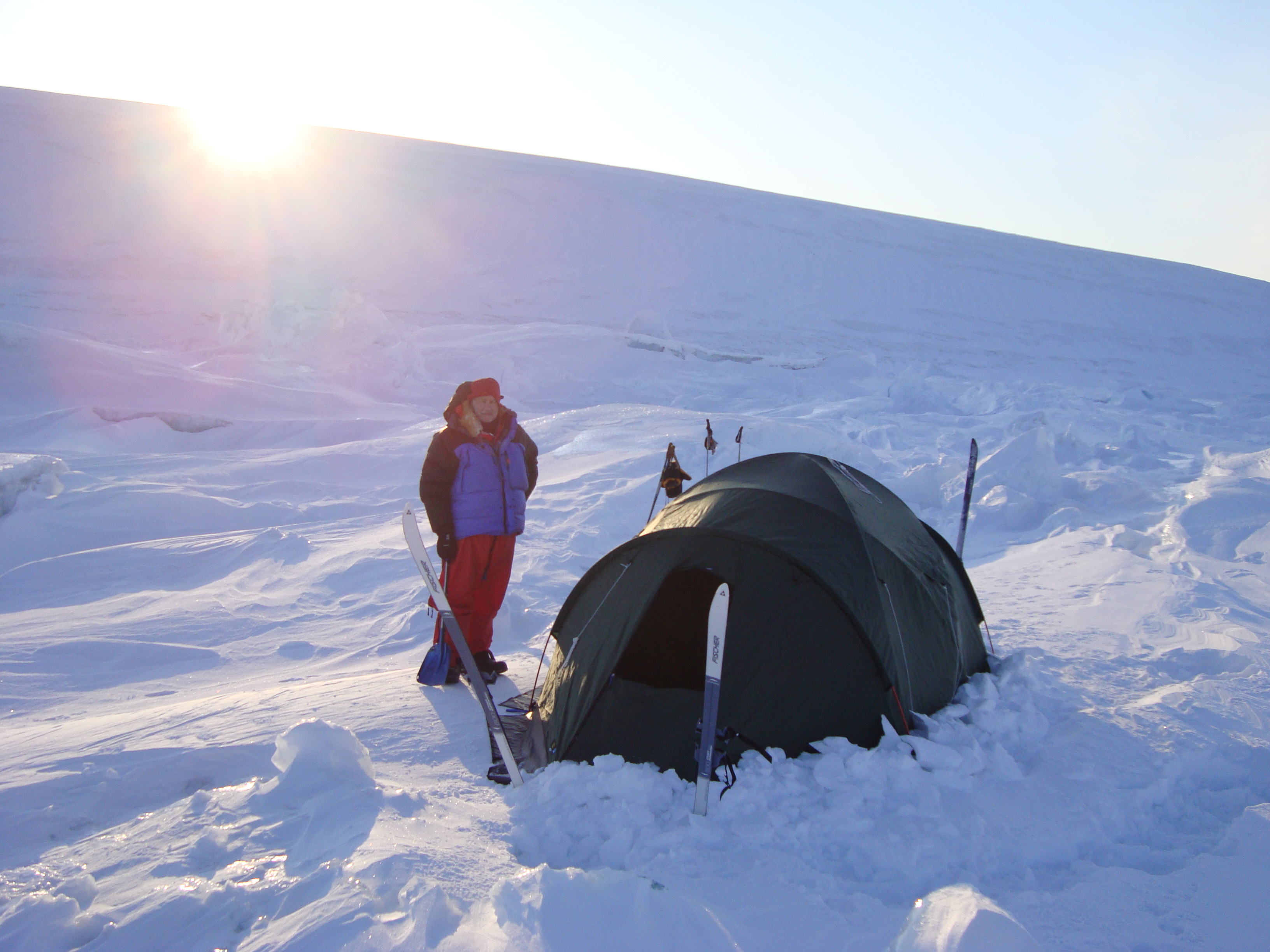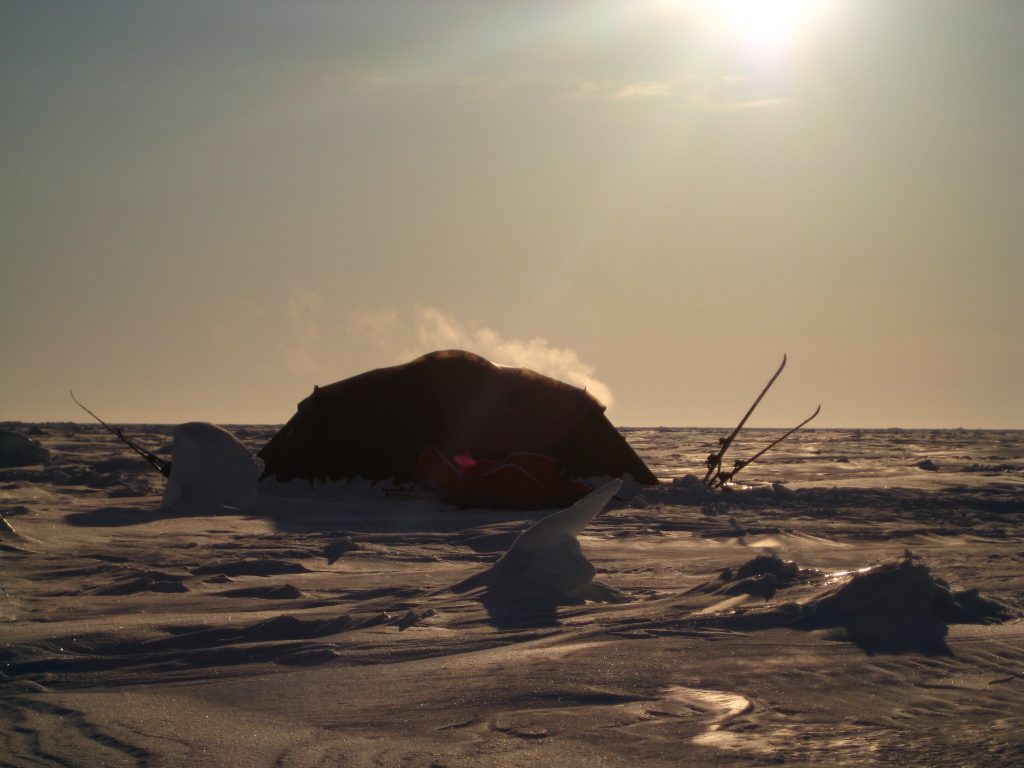
Survival Shelter
Without Survival Shelters, our chances of surviving would have been significantly diminished
We set off from Resolute,on Resolute Bay, (74° 43’ N and 94° 53’ W), in the territory of Nunavut, Canada, to walk/ski for 648 km (403 miles), pulling our food and equipment bound for the Magnetic North Pole.
James and I were issued with a Terra Nova Tent that was proven to withstand harsh Arctic conditions. It is known for being lightweight even when frozen, as well as being tough and durable. The tent provides a shelter for cooking, eating and sleeping and surviving the night.
For 12-hour each day I leaning into my harness in order to drag my pulk loaded with its precious cargo northwards over some of the most difficult terrain on our planet, crossing the frozen polar waste, over pressure ridges, through huge mounds of ice rubble and each night, at the mercy of the arctic’s hostile climate I slept in the safety of my Terra-Nova Tent.
Without Adequate Shelter in minus 40 C we would Never have Survived.

At 8.47 p.m. on 29 April 2009, arrived at the Magnetic North Pole, 78° 35’ 724” N, 104° 11’ 915” W.
I want to tell you more about my extraordinary journey.
Pitching a tent in extreme cold conditions
- Choose a double walled Four- Season Tent
- Dig out a space within your door/vestibule, min. depth of 1ft /30cm, making it easier to put your boots on.
- The coldest air will sink down into the hole
- Pitch with your door flap facing downhill: so the cold air, which flows downward, can exit.
**Every little does help.
Apart from the Camping Tent there are forms of natural shelters for the survivalist: the lean-to shelter, the A-frame shelter, and the Debris Hut/ Cocoon.
A- Frame shelter can be built using various materials such as sturdy branches or logs of similar lengths to form the main structure of the A-frame.
They are known for their simplicity, stability and resistance to harsh weather conditions like heavy snow loads or strong winds due to their triangular shape.
A survivalist debris hut or cocoon is a simple and effective shelter built using natural materials found in the environment. It’s designed to provide protection from the elements in emergency situations or wilderness survival scenarios.
This type of shelter is intended for short-term survival situations and might not provide the comfort or durability of a more permanent structure
Tips on Shade Shelter …. Protection from Heat
• Dig or rake the surface too uncovered cooler ground and build a lean-to shelter of sticks and branches over it
• Since, the purpose of this shelter is to create shade use any available fabric or natural foliage to cover the sunny side.
• Chill out in the cool soil beneath the shade.
Tips on an Insulated Shelter ….Protection from the Cold, Wet and Hypothermia.
If you’re on your own, your body heat will be the main source of warmth, so build your shelter just big enough to for you to squeeze into when lying down. If you have friend, again think small – you will benefit by getting as tight together as possible.
**This is no time to be concerned about ‘intimacy’ it’s about survival; No tongues!
- Construct a simple lean-to, use an embankment, boulder, fallen tree or standing tree as a sturdy side wall
- Lean sticks close together on the one open side and fill in gaps.
- Cover with grass, leaves, moss, bracken etc. — the thicker the material, the more protection.
- Create bedding by adding leaves, grass and pine needles for extra insulation.




